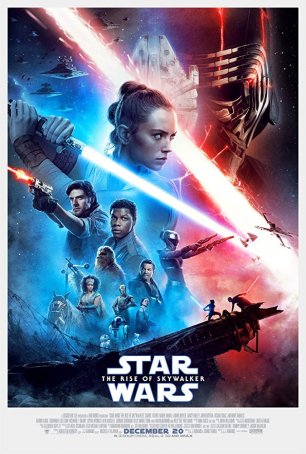Twice Upon a Time
It's very likely you've never heard of the 1983 animated feature, TWICE UPON A TIME. Quite obscure. I actually remember its very limited release, likely because it played at a multiplex I frequented and also because executive producer George Lucas' name figured prominently on the movie poster. I study film posters very carefully, memorizing artwork and credits. I've always been fascinated by them.
Lucas apparently did not have creative input on this movie. Exec producers often merely use their names to get projects financed. This one must've been a tricky sell. Children's film, yes, but what a complex and sophisticated screenplay! Director/writer John Korty fashioned this true curiosity of a movie as possibly a riff on the seriousness of the usual children's fable, or maybe merely as a diversion for adults who remember such stories.
There is a city called Din that looks quite a bit like Any Big Metropolis, U.S.A., with its scurrying citizens and zooming automobiles. The people of Din never stop; that's why they're called Rushers. Who calls them that? The creatures of 2 distinctively different worlds: Frivoli and Murkworks. Both places are in the business of manufacturing overnight dreams for Rushers. In a sequence I liked quite a bit, we see the Figmens of Imagination, dot-like fairies (under the leadership of Greensleeves) leaping through windows onto the heads of sleeping Rushers, smiles on their faces as another nice dream is successfully delivered.
But working against the Figmens are the vultures of Murkwurks, who instead drop nightmare bombs. It is the desire of their despot, a short, rotund vulgarian called Synonamass Botch to create permament nightmares in the heads of busy Rushers, even while they're awake. But isn't their gritty world already a nightmare?
Enter Ralph the All-Purpose Animal and his silent sidekick, Mumford. Both are lackluster workers who get their chance to save the day. They are to find the Cosmic Clock, its internal spring possessing the power to stop time. It is a hazardous journey. Botch pretends to be on their side. There's a damsel in distress, a dopey wannabe superhero, a robot gorilla that shows reruns on its TV screen, a "nightmare" screenwriter, and a fairy godmother, who insists on being called FGM ("I hate excess verbiage") along for the ride. There is an ingenious sequence where our heroes battle office equipment come to life, a sequence which I suspect would've made Buster Keaton and Ernie Kovacs proud.
TWICE UPON A TIME is a dizzying work of invention, easily one of the most unique animated films I've seen. The style itself, called "Lumage" is of cut-out photos and illustrations, jaggedly moved around over illuminated surfaces, like those devices over which medical doctors examine your X-rays and MRIs. Despite the potpourri of different images (some drawn, some actual photographs), everything in this movie seem to appropriately occupy the same space. The film is in 2 dimensions, but there is a sense of depth of field, even with static backgrounds.
Korty paces his 75 minute film breathlessly. It feels like a collage come to life, all fluttering and harried. The dialogue is almost as rapid-fire as the pace, with much mumbling and wit from everyone, especially Botch (voiced by Marshall Efron, whose vocal improv is mildly risque, which got him into hot water with Korty, it's said). There was no way to catch everything said in one viewing. Even the familiar, mellow voice of Lorenzo Music (who plays Ralph and had previously voiced Garfield the Cat and Carlton the Doorman on Rhoda) spouts verbal gems to which you really have to listen closely to catch.
Watching the end credits is almost as much fun as that of the rest of the film. The main cast and crew have their pictures alongside their names, in a style I remember from some of the Peanuts feature films. Among those names: THE NIGHTMARE BEFORE CHRISTMAS' Henry Selick and none other than David Fincher.



Comments